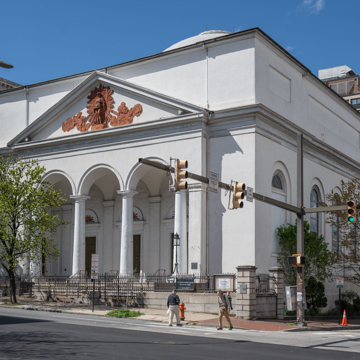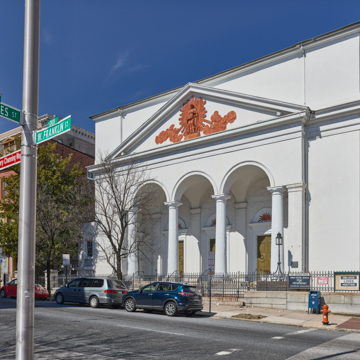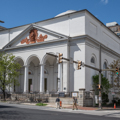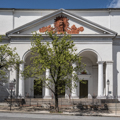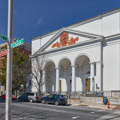This is one of the most monumental of America’s early neoclassical buildings and the greatest of Godefroy’s extant works. French born and trained, Godefroy was among the luminaries of Baltimore’s early-nineteenth-century architectural community of professionally trained immigrant architects who brought the latest in European design and engineering concepts to an America in search of its own cultural identity. Like the Basilica of the Assumption built concurrently, it represents a significant break from traditional religious architecture. It embodies the root elements of early neoclassicism in a rational composition featuring a play of geometric shapes in a typically restrained manner. The building’s bold cube-like form is surmounted by a hemispheric dome, with a pedimented portico supported by slim Tuscan columns and the triple-arch motif considered a particularly French interpretation. A stucco finish contributes to its austere appearance, with embellishment confined to the terra-cotta Angel of Trust sculpture appearing in the tympanum. It is a replica by Henry Bergel of the original created by Antonio Capellano, who was also responsible for realizing Godefroy’s design for the Battle Monument.
The interior features a huge semicircular coffered dome, supported by arches and engaged pilasters. Poor acoustics led to a remodeling in 1893, partitioning the arches into side aisles and masking the curved chancel. A Tiffany stained glass elliptical transom was added in 1904. The church is significant historically as the site of Dr. William Ellery Chan-ning’s celebrated 1819 “Baltimore Sermon” where he espoused for the first time the fundamental principles of American Unitarian thought.


